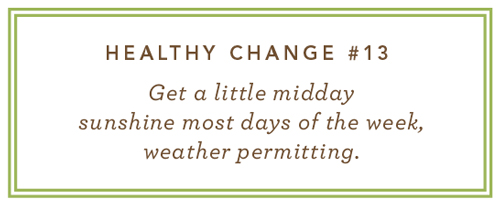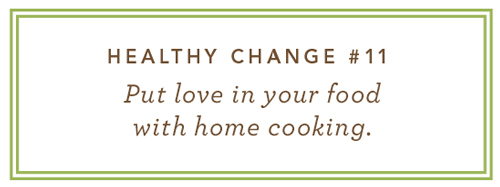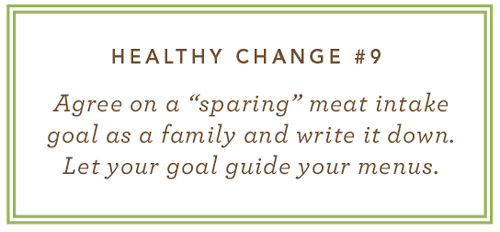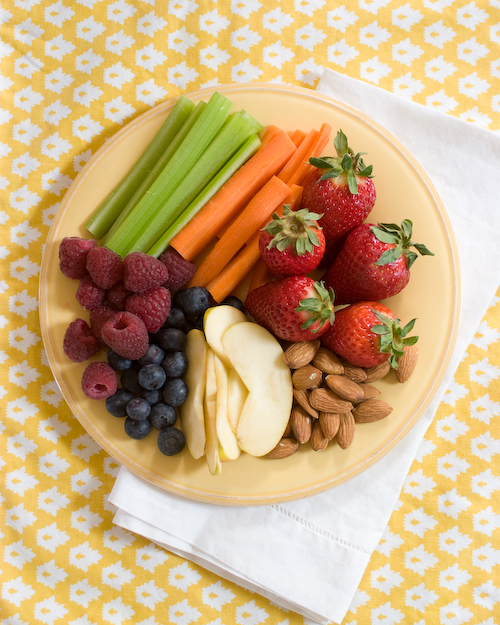To Live More Fully
13 Topics
Before we get to this week’s menu, we should pause for a moment to review the 1st quarter, just finished. The Healthy Changes thus far follow a pattern of 13 topics that repeat each quarter. Each time we address a topic we add to what was said before as we build a new food culture based on the best of tradition, scripture, and science. The most applicable scripture is known as the Word of Wisdom. Our goal is a food reformation; the 52 Healthy Changes are a cure for the dietary errors of the 20th century that gave us the modern American diet (MAD) and a host of modern chronic diseases.
Here are the topics of the 1st quarter (with the 1st quarter’s Healthy Change in brackets):
- Reduce sugar intake (one 12 oz. soda per week).
- Eat only healthy fats (avoid deep fat fried foods).
- Live purposefully (write a weekly menu).
- Rediscover traditional meals (don’t skip breakfast).
- Live a muscular lifestyle (get 30 minutes of sweaty exercise most days).
- Eat vegetables (buy enough vegetables for 5 daily servings).
- Eat more fruits and nuts (eat antioxidant rich foods, like berries).
- Choose healthy snacks (prepare a daily snack plate, or bag).
- Restrict meat consumption (eat twice as much plant protein as animal protein).
- Eat whole grains (eat bread with more fiber than sugar).
- Cook (it’s best to cook your own food, or be on good terms with a cook).
- More ways to eat vegetables (eat a green salad, or smoothie, daily).
- Special topics (get a little midday sunshine most days).
We've put together a report card, listing each Healthy Change for the first quarter and asking you to judge how well you are living each one (with a score of 1 to 5). Perhaps we'll have a prize for the reader with the best score?

The Good Word
I’ve been thinking about the scriptures this past weekend. Scripture is one of the oracles, along with tradition and science, that guide Word of Wisdom Living. The Bible opens in Genesis with a poetic retelling of the Creation story. Between the creation of earth and man, we read about the creation of our food supply—of the sun that shines upon the earth and makes the seeds to grow and yield fruit; then the creation of living creatures, those of the sea, the winged fowl, and finally the animals that walk the land.
In these Creation steps, Genesis records the repeating benediction, “And God saw that it was good.” There are clues here, I believe, to how we should eat. I perceive a blessing of the food supply; I imagine God giving us a meaningful stare, a nudge towards the food He created and meant us to eat.
If we stand back enough to take a fresh look at the MAD diet, we see that the industrialization of food made a good business for Food Inc. but a dietary very different from what God created. Such a contrast: God's work on the one hand and man's factory food on the other. As we work our way through the 52 Healthy Changes—week by week, rediscovering the traditional food of the Bible—don’t you feel a growing reverence for food as originally designed? I think learning how to cook should begin with reading about the Creation of the ingredients—and a reverence for food in the natural form.
This Week’s Menu
The Bible teaches the purpose of life, which leads me to this thought: We don’t cook and eat well because we fear death—though I’m in no rush to experience it. Rather we eat well because we love life and wish to experience its full potential. To that end, here’s what we ate this week:
Monday (originally on Sunday when we had guests, but we used it for leftovers on Monday)
- Skip’s Potato Soup
- Fruit and Spinach Salad
- Sourdough bread
- Ice cream with strawberries
Tuesday
- Classic Shrimp Salad (recipe of the week)
- Asparagus (yes, a lot of green, but the asparagus was peaking)
- Ice cream with strawberries (lest the berries go bad)
Wednesday
- Stuffed bell peppers (using hamburger from the freezer and leftover rice)
- Skip’s Peanut Coleslaw (we substituted pineapple and cashews for the peanuts)
Thursday
- Beth’s Vegetarian Enchiladas (3 batches; one for a friend, and froze one)
- House salad
Please comment: If you didn't share your vitamin D test history in the last post, go there and add your experience. Due to an Internet outage we ran late this week so this post will just be up one day. This month is National Infertility Awareness Week, which will influence our next post.
 Monday, April 2, 2012 at 6:50AM | by
Monday, April 2, 2012 at 6:50AM | by  Skip Hellewell |
Skip Hellewell |  4 Comments |
4 Comments |  15 References | | in
15 References | | in  healthy change,
healthy change,  report card |
report card |  Email Article
Email Article 

















